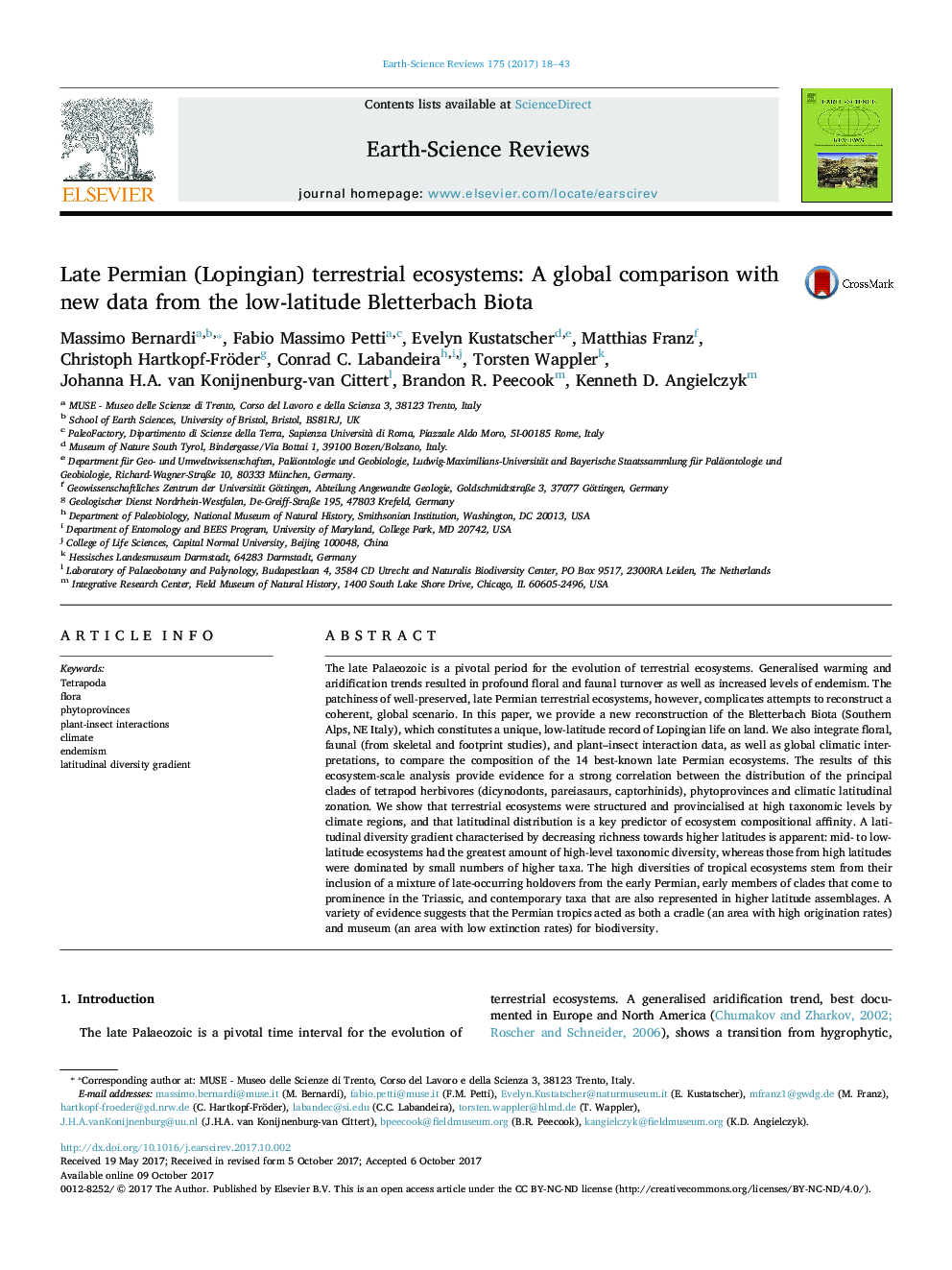| کد مقاله | کد نشریه | سال انتشار | مقاله انگلیسی | نسخه تمام متن |
|---|---|---|---|---|
| 8913123 | 1639927 | 2017 | 26 صفحه PDF | دانلود رایگان |
عنوان انگلیسی مقاله ISI
Late Permian (Lopingian) terrestrial ecosystems: A global comparison with new data from the low-latitude Bletterbach Biota
دانلود مقاله + سفارش ترجمه
دانلود مقاله ISI انگلیسی
رایگان برای ایرانیان
کلمات کلیدی
موضوعات مرتبط
مهندسی و علوم پایه
علوم زمین و سیارات
زمین شناسی
پیش نمایش صفحه اول مقاله

چکیده انگلیسی
The late Palaeozoic is a pivotal period for the evolution of terrestrial ecosystems. Generalised warming and aridification trends resulted in profound floral and faunal turnover as well as increased levels of endemism. The patchiness of well-preserved, late Permian terrestrial ecosystems, however, complicates attempts to reconstruct a coherent, global scenario. In this paper, we provide a new reconstruction of the Bletterbach Biota (Southern Alps, NE Italy), which constitutes a unique, low-latitude record of Lopingian life on land. We also integrate floral, faunal (from skeletal and footprint studies), and plant-insect interaction data, as well as global climatic interpretations, to compare the composition of the 14 best-known late Permian ecosystems. The results of this ecosystem-scale analysis provide evidence for a strong correlation between the distribution of the principal clades of tetrapod herbivores (dicynodonts, pareiasaurs, captorhinids), phytoprovinces and climatic latitudinal zonation. We show that terrestrial ecosystems were structured and provincialised at high taxonomic levels by climate regions, and that latitudinal distribution is a key predictor of ecosystem compositional affinity. A latitudinal diversity gradient characterised by decreasing richness towards higher latitudes is apparent: mid- to low-latitude ecosystems had the greatest amount of high-level taxonomic diversity, whereas those from high latitudes were dominated by small numbers of higher taxa. The high diversities of tropical ecosystems stem from their inclusion of a mixture of late-occurring holdovers from the early Permian, early members of clades that come to prominence in the Triassic, and contemporary taxa that are also represented in higher latitude assemblages. A variety of evidence suggests that the Permian tropics acted as both a cradle (an area with high origination rates) and museum (an area with low extinction rates) for biodiversity.
ناشر
Database: Elsevier - ScienceDirect (ساینس دایرکت)
Journal: Earth-Science Reviews - Volume 175, December 2017, Pages 18-43
Journal: Earth-Science Reviews - Volume 175, December 2017, Pages 18-43
نویسندگان
Massimo Bernardi, Fabio Massimo Petti, Evelyn Kustatscher, Matthias Franz, Christoph Hartkopf-Fröder, Conrad C. Labandeira, Torsten Wappler, Johanna H.A. van Konijnenburg-van Cittert, Brandon R. Peecook, Kenneth D. Angielczyk,